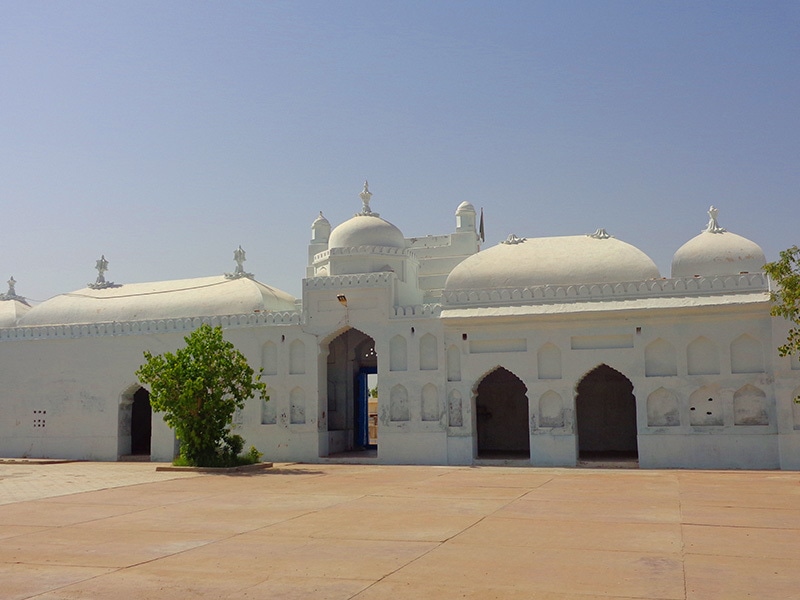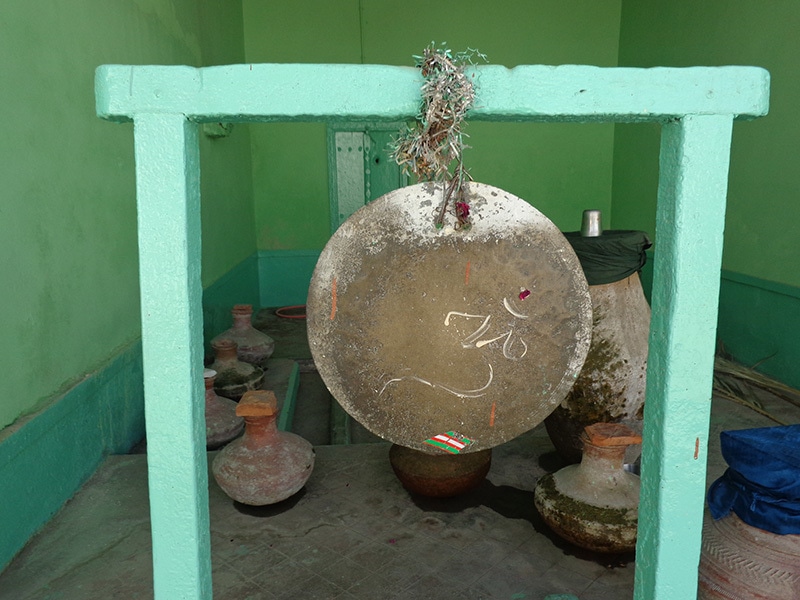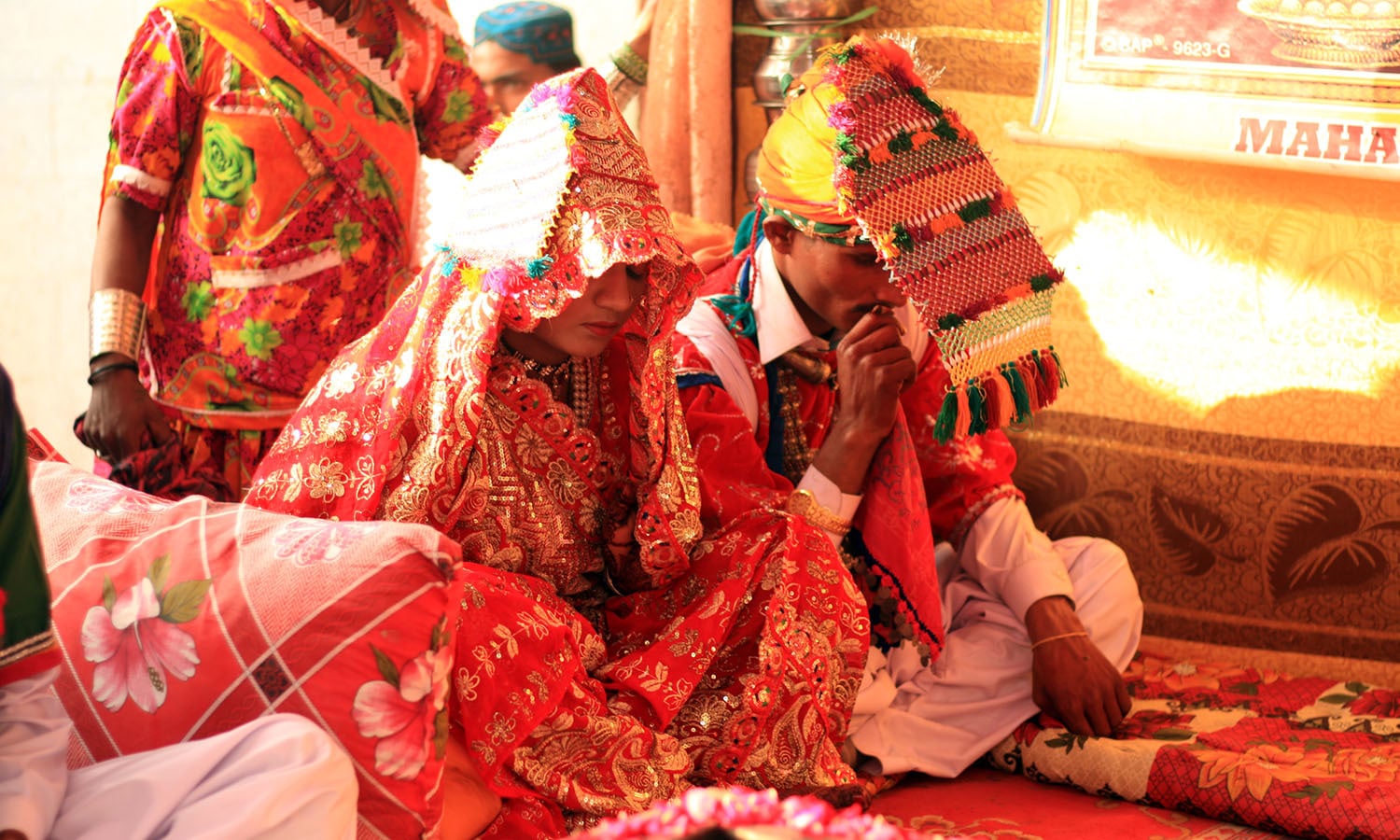Jhulay Lal's cradle of tolerance
ZAHIDA REHMAN JATT
One of my colleagues asked me some time ago:
‘Can you believe that Hindus and Muslims can pray at the same place simultaneously?’
‘Well, of course not, at least not in Pakistan,’ I swiftly retorted.
He smiled and responded mysteriously, ‘There is a place not far from here where they do.’
It was the curiosity to confirm this statement that led me to the shrine of Jhulay Lal. Interestingly, contrary to the popular conceptions of the puritanical and narrow confines of religion, there still exist certain elements in our society that are a manifestation of our centuries’ old traditions of religious coexistence.
The shrine of Saint Jhulay Lal is one of these examples.
The main dome.
The front facade of the shrine.
We visited the shrine on a hot April day, though the cool breeze made it somewhat bearable. The town of Udero Lal, where the shrine is situated, lies almost 40 kilometers away from the Sanghar district. It is a small sleepy town with the shrine of a saint at its epicenter.
We arrived to see vendors selling edible items as people sipped tea in
dhaba-styled hotels, with radio waves sailing through the air around us, piercing it with Sindhi folk music. The houses were small and the streets congested. But we had no difficulty reaching the shrine, for everyone we met knew the directions like the back of their hands.
The white domes of the shrine could be seen on the horizon from a distance. We entered the shrine and found it spick-and-span, painted spotless white with its battlements and bastions, reminiscent of an old fortress.
The inner sanctum, which is comparatively new, is a beautiful structure with ornate doors and exquisite woodwork. An Urs and fair commemorating the disappearance of the saint is held annually, where a large number of devotees from across Pakistan and abroad come and pay homage.
There is an adjoining room where a pair of sandals is kept, reportedly belonging to the saint.
Two pigeons are resting inside a niche.
A plaque documenting the repair work at the shrine.
An ornate passage leading to shrine.
A wooden door leading to the inner sanctum.
A signboard indicating the place where the sandals are kept.
Sandals that are believed to belong to the saint.
Jhulay Lal is related to the River Indus and sometimes revered as an incarnation of the River God Varuna in Sindh.
Most Muslims call the saint Khwaja Khizar, who is believed to guide people travelling through water courses and on voyages. The
muhanas or
mallah (as the fishermen are called in Sindh), held the saint in high esteem. Jhulay Lal is also called Zinda Pir, Sheikh Tahir, Khawaja Khizar, Udero Lal and Amar Lal.
According to various historical and colonial accounts, Jhulay Lal is said to have lived in the 17th century. Mirkh Shah, the despotic ruler of Thatta, tried to forcibly convert his Hindu subjects to Islam. On hearing this, the Hindus went to the bank of the Indus, fasted and prayed to the River to liberate them from this ordeal.
As a result, an image appeared from the depths of the River and told them that a child would be born to an aged couple living at Nasarpur, who would help them.
The child was named Udero Lal and also given the title 'Jhulay Lal', as his cradle was said to swing on its own. This child grew up into a valiant man and argued with Mirkh Shah, who realised his mistake and let the Hindus peacefully live in his domains.
Bells ring during different times of the day.
A poster showing Jhulay Lal riding the Palla fish.
Lamps are burnt inside the temple.
The jhula inside the shrine.
We entered the complex to the welcome of an eternal peace, enveloping everything around us. The tiled floor felt wonderfully cool, so we sat down in silence for some time. Inside the shrine, the air was laden with fragrance as the oil lamps were cast shadows over the walls; filling the room with a light yellowish glow.
Jhulay Lal is often depicted as sitting on a Palla fish (an indigenous species of the Indus) or riding on his horse. It is believed that he and his horse disappeared into a well mysteriously; his shrine now erected at the same place.
From that day on, the shrine has been a centre of attraction for thousands of Hindus and Muslims alike. The shrine, located in Udero Lal, houses a Hindu temple alongside a Muslim-style tomb, and the caretakers include both Hindus and Muslims. In the evenings, Hindus perform
pooja and
aaarti while Muslims too, offer prayers at the tomb .
The bell that is rung at the time of Pooja.
The devotees tie threads to a tree.
In the courtyard, people tied colourful threads and cloths on a tree, as tokens of prayers which would only be removed once the problem was resolved. Then, they would bring offerings to the saint, especially miniature swings and cradles.
Before we left, we prayed to the saint of The River Indus too, silently wishing that we may revert to our old values of peace and harmony.
This shrine stands as perhaps one of the few remaining strongholds of the eclectic elements of the Sindhi society, which are now being threatened by fundamentalism. The heritage of our mystic traditions should be promoted at state level, so that we may revive the love of humanity and co-existence which has always been part of our quintessential values.
A view of the courtyard.





















































